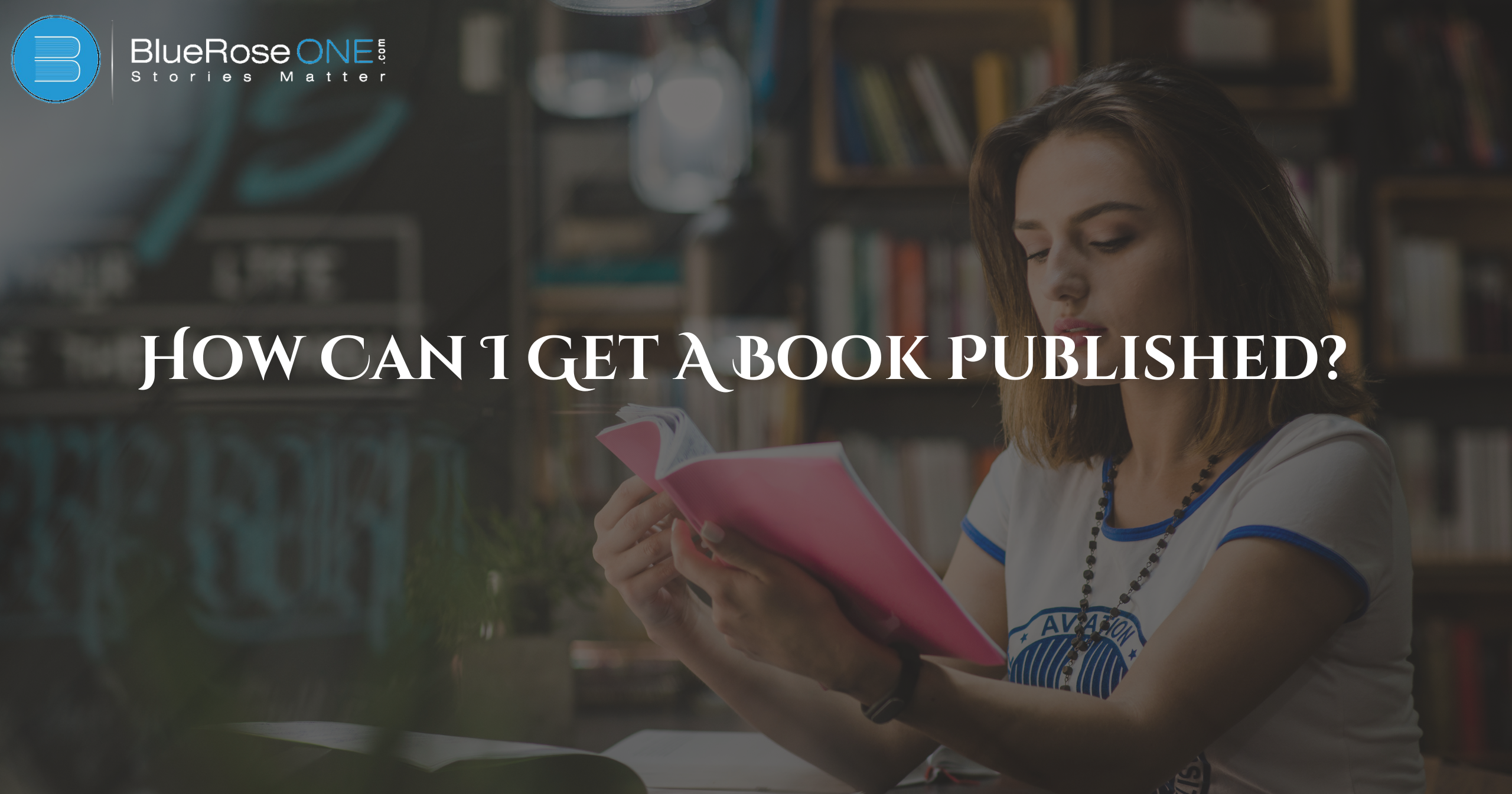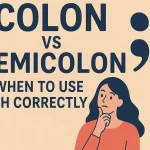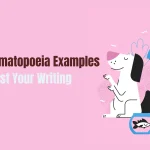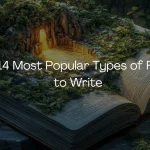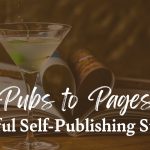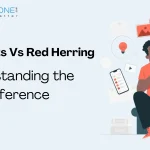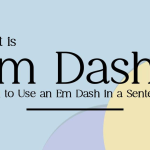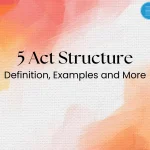Traditional vs. Self-Publishing
When it comes to publishing a book, authors have two primary options: traditional publishing and self-publishing. In traditional publishing, authors collaborate with well-known publishers who manage every step of the creation process, including design, distribution, and editing. Because established publishers have extensive industry contacts and marketing resources to promote a book broadly, this option frequently delivers greater credibility. It can be difficult to get a book published by a traditional publisher, though. Because the industry is so competitive, authors usually need an agent to represent them, and the process can take months or even years. In addition, authors receive a reduced percentage of book sales as royalties and give up some creative freedom.
However, self-publishing gives writers complete control over every aspect of their work, including design, editing, pricing, and distribution. With this quicker alternative, authors can publish their work more quickly by having direct access to publishing sites like Amazon Kindle Direct Publishing. Because authors are in charge of reaching their audience, self-publishing necessitates a greater initial investment and marketing efforts, even though it does give authors a higher portion of profits. Because self-publishing and traditional publishing each provide special advantages, authors should select the strategy that best fits their objectives, schedule, and available funds.
You may also like: Ahemdabad National Book Fair 2024: A Literary Fest at Sabarmati Riverfront
For writers who want aspects of both self-publishing and traditional publishing, hybrid publishing offers an alternate path. Similar to self-publishing, the author frequently makes a financial contribution to the publication process under a hybrid model, but they still receive the expert services that publishing houses are known for. These services, which are usually handled by the hybrid publisher, can include editing, design, distribution, and marketing. In contrast to self-publishing, which requires the author to handle all facets of the book’s creation and marketing on their own, hybrid publishers provide organized assistance to guarantee the work meets strict industry standards. Authors who appreciate industry knowledge and broader distribution networks but still desire creative freedom may find this to be an alluring alternative.
The fact that the author keeps a bigger portion of royalties in hybrid publishing as opposed to traditional publishing, when the publisher keeps a smaller portion of profits, is one of the main differences. However, hybrid publishing offers a shared financial and creative investment, in contrast to self-publishing, where authors take all the risks and upfront expenses while keeping all the rewards. The independence of self-publishing and the support system of traditional publishing are combined in hybrid publishing, which provides authors who are wondering “how can I get a book published?” with a well-rounded alternative. For writers who want to be more involved but still have access to professional tools, this can be a flexible option.
Preparing Your Manuscript
One of the most important first steps in publishing a book is preparing your manuscript. Begin by making sure your manuscript is comprehensive, meticulously edited, and formatted in accordance with industry norms. Once your draft is complete, put it aside for a few days and then look at it again with new eyes. This will assist you in identifying potential areas for revision. Next, think about employing a qualified editor to edit and proofread your work. Editors can provide insightful feedback to help you polish your work and identify any story holes, grammatical flaws, or contradictions. Your narrative will be stronger and more likely to be accepted by agents or publishers if it is edited well.
After your work is ready, format it in accordance with the standards established by the publishing industry or the particular publishers you are aiming for. Manuscripts should normally be double-spaced, with regular margins, and typed in a readable typeface (such as Times New Roman, 12-point size). A well-formatted manuscript is easier to read and conveys professionalism, both of which can have a big impact on publishers. Create a succinct author bio, summary, and cover letter as well. These components increase the possibility of a favorable response by assisting publishers in rapidly comprehending the attraction of your book and your writing experience.

Editing and Proofreading
When preparing a book for publication, editing and proofreading are crucial since they guarantee that the writing is readable, interesting, and free of errors. Editing concentrates on the larger picture, which includes enhancing the narrative’s organization, honing characters, and making concepts more understandable. It frequently consists of several stages, beginning with developmental editing, in which editors assist in forming the book’s plot, content, and flow. Line editing, which refines language, sentence structure, and word choice to make the text smoother and easier to read, may be used in later stages.
The last quality check before publication, however, is proofreading. It finds small issues that would have gone unnoticed, like typos, incorrect punctuation, and inconsistent formatting. Proofreading guarantees that the book is readable and appears professional. These processes are essential for authors who want to publish since a work that has been well edited and proofread has a considerably higher chance of catching the attention of readers and publishers.

You may also like: List of 10 Best Librarie in Ranchi for Bookworms
Hiring a Professional Editor
One of the most important steps in getting your book published is hiring a professional editor. An editor might identify problems in your book that you, as the author, might miss since they have a new, objective viewpoint. They guarantee that your story flows naturally and helps to clarify and polish language. Additionally, a skilled editor will improve sentence structure, correct spelling and punctuation, and make your work easier to read overall. A variety of specializations are available for editors, including line editors who refine sentence-by-sentence details or developmental editors who concentrate on larger components like story and character. Your book will be polished, professional, and ready for readers if you work with an editor.
An editor can not only improve your work but also guide you through industry norms. They can help you achieve these requirements because they are aware of what publishers are looking for, which will improve your chances of being accepted. A book’s chances of being published or not are frequently determined by the cost of hiring a professional editor. Hiring an editor also helps many self-publishing authors make their book stand out from the competition. In the end, the experience of an editor can increase your self-assurance and make your work more appealing to readers and publishers.

Getting Feedback and Beta Readers
One important phase in the publication process that helps authors polish their work before submission is getting input from beta readers. People who read a draft of your book and provide candid input on the plot, characters, and pacing are known as beta readers. Beta readers, as opposed to professional editors, are usually regular readers in your target demographic who are able to identify problems from the viewpoint of the reader. Their input can assist you in identifying what is and is not effective, enabling you to make changes that will improve the reading experience as a whole. Through social media networks, online writing organizations, or by contacting friends who are interested in your genre, you can locate beta readers.
Asking targeted questions of beta readers can also yield insightful information. For instance, you could enquire as to whether they found the plot interesting, the characters relatable, or any aspects unclear. After obtaining input, spend some time going over each comment and searching for any recurrent themes or critiques. This will assist you in determining which sections of the book require the greatest attention. When you deliver your book to a publisher, it will be much more polished and interesting if you pay attention to beta readers’ feedback and make the required changes.
You may also like: Top 6 Best Russell Brunson Books of All Time
Choosing the Right Publishing Path
Examine the benefits and drawbacks of self-publishing, hybrid publishing, and traditional publishing while deciding on the best publishing strategy. Conventional publishing entails collaborating with a reputable publishing business that manages marketing, distribution, design, and editing. This approach entails a drawn-out clearance procedure, little creative control, and frequently lesser royalties, but it can also provide your book legitimacy and access to well-established networks. However, self-publishing gives you complete control over all aspects of the process, including design, marketing, and content. Higher royalties and more flexibility are two benefits of self-publishing, but you will have to put in the time and money up front and manage every part of the publication process yourself.
Traditional and self-publishing methods are used in hybrid publishing. Under this model, the publisher helps with design, distribution, and occasionally marketing, while the author bears some of the financial burden of publication but maintains greater creative and marketing control. For writers who desire professional assistance without completely relinquishing creative control, this choice may offer a useful compromise. Your objectives, financial constraints, and desired level of control over the book’s development will all influence your decision. Make sure each choice fits with your book’s vision by thoroughly researching them.
Pros and Cons of Traditional Publishing
Brand Value
An author’s work frequently gains significant brand value via traditional publishing. Well-known publishers are respected in the field, which gives their works legitimacy. Readers and retailers may perceive a book as being of higher quality or more dependable when it is supported by a reputable publishing house, which increases sales and visibility. For novice writers hoping to establish a good reputation in the marketplace, this can be really helpful.
However, there may be drawbacks to using traditional publication to increase brand value. New voices or unusual subjects have a tougher time getting noticed because publishers sometimes concentrate on well-known authors or particular genres. Furthermore, the process might take a long time, and authors usually have less control over the finished product’s presentation and promotion. This compromise may make it more difficult for certain writers to build their brands in their own distinctive ways.
Zero Investment from author’s side
The fact that traditional publishing usually involves no investment from the author is one of its main advantages. All of the initial expenses, such as editing, design, printing, and distribution, are covered by reputable publishing houses. This makes it a low-risk financial choice because authors do not have to use their own funds to produce the book. Furthermore, major publishers frequently have skilled marketing departments that aid in book promotion, expanding the book’s audience and possible sales.
Traditional publishing does have drawbacks, though. Because publishers have the last word on the book’s content and book cover design, authors may not have as much creative control over their work. Additionally, hiring an agency and navigating several approval rounds are common steps in the drawn-out and difficult process of becoming conventionally published. Because the publisher keeps a bigger percentage of the income to pay for these expenditures, traditionally published authors typically receive lesser royalties even when the publisher covers the costs.
Great Distribution Channels
Traditional publishing’s well-established distribution channels are among its main advantages. Because traditional publishers have established relationships with libraries, bookshops, and online platforms, it will be simpler for your book to reach people worldwide. Your book will be highly visible thanks to this network, which frequently consists of both independent and large chains of bookshops. Traditional publishing also gives your book access to big-box stores and library systems that self-published books might not be able to reach.
Nevertheless, these channels of distribution have certain drawbacks. Conventional publishers can increase the number of books in stores, but they also impose stringent deadlines and limitations that may reduce your influence over the distribution process. Furthermore, compared to self-publishing, you can receive smaller royalties per book sale because traditional publishers keep a bigger cut of the earnings.
You may also read: What is Flash Fiction? and How to write it
Benefits of Self Publishing
Creative Control: One of the primary benefits of self-publishing is the opportunity to express one’s creativity. Authors have total control over all important decisions related to their book, from the cover design and content to the marketing strategy. This freedom allows authors to express their own voices and visions without interference from publishers. Additionally, self-published writers are free to choose how and when to communicate with their readers, ensuring that their work is completely in line with their goals and values.
Higher Royalties: Increased income for authors are one of the main advantages of self-publishing. Self-published authors can keep 60–70% of the revenues, in contrast to traditional publishing, which usually pays authors 10-15% of the book’s sales price. This implies that you make a lot more money each copy of a book sold. You can sell your book, reinvest in your effort, or just take pleasure in the fruits of your labor when you have financial independence.
Faster time to market: One major benefit of self-publishing is a faster time to market. Unlike traditional publishing, which can take months or even years due to lengthy submission processes and modifications, self-publishing allows authors to share their work as soon as it is ready. This quick turnaround allows authors to respond to trends, post content on schedule, and interact with readers without unnecessary delays. Generally speaking, self-publishing gives writers more schedule flexibility and speeds up their readership.
Global Reach: One of the primary benefits of self-publishing is its global reach. Unlike traditional publishing, which often focuses on certain regions, self-published authors can use online shops such as Amazon and Barnes & Noble to distribute their works globally. This suggests that viewers in other countries can readily obtain their work. Additionally, authors are in charge of their marketing strategies, which allows them to expand their readership and gain recognition far beyond regional or national boundaries.
Greater Flexibility in Pricing: One of the key benefits of self-publishing is greater price flexibility. Unlike traditional publishing, where pricing is often established by the publisher, self-published authors are free to choose their own prices. This allows businesses to adjust their book’s price in reaction to demand, promotions, and market trends. Allowing authors to experiment with different pricing points in an attempt to improve readership and sales helps them find the perfect balance that works for their audience.
Ownership of Rights: Another big benefit of self-publishing is that you own the rights. When authors self-publish, they retain total control over their work, including copyright and distribution rights. This suggests that people are free to decide if they want their book to be published in print, digital, or audio formats. Without a publisher’s approval, authors who maintain their rights can also look for other opportunities, including movie adaptations, or alter their work into different formats. A greater degree of control could lead to more creative freedom and potential financial reward.
Is Hybrid Publishing Right for You?
For writers seeking a middle ground between self-publishing and traditional publishing, hybrid publishing is an alternative. With hybrid publishing, the publisher and author split expenses and duties, which frequently results in quicker publication dates and greater artistic control over the piece. In contrast to traditional publishers, hybrid publishers charge writers upfront or require them to pay for some expenses, but they usually provide services like editing, cover design, and distribution. Authors who want expert assistance without sacrificing full rights or having to endure a drawn-out submission process would find this arrangement appealing. However, hybrid publishing can be expensive, so it’s crucial to assess if the investment fits within your budget and publication objectives.
If you’re willing to invest in your book but also want professional advice and distribution support, hybrid publishing might be the best option. It’s a suitable option for writers who might not have landed a conventional contract or who want to publish their work more quickly while maintaining a high standard of quality. To make sure hybrid publishers are trustworthy and provide value for the money they demand, authors should do extensive research on them. By fusing elements of self-publishing with traditional publishing, hybrid publishing provides a middle ground for many authors and can result in a more flexible and satisfying publication experience.
How to Find a Literary Agent
One of the most important steps in having your book published is finding a literary agency. Investigate agents that specialize in your field, such as poetry, nonfiction, or fiction. Check out agency websites, which frequently have a list of their current clientele and the kinds of books they are interested in representing. Finding trustworthy agents can also be aided by resources such as the Writers’ Market and the Association of Authors’ Representatives (AAR). After you’ve compiled a list of possible agents, carefully review their submission requirements. What each agent wants to see in a query letter or manuscript sample may vary from agent to agent.
When you’re prepared to approach an agent, draft a clear and interesting letter of inquiry. This letter should serve as an introduction to you and your work, emphasizing its key ideas and intended readership. Provide a succinct author bio that highlights your background in writing or any pertinent qualifications. Once your questions have been sent out, be ready for responses, which may take some time. React professionally if you get criticism or requests for additional information. Keep in mind that perseverance is essential; if an agent rejects your work, it doesn’t necessarily mean your novel is bad; it may simply not be the appropriate fit. Until you discover the proper fit, keep honing your pitch and asking the correct questions!
You may also like: List of Best Libraries in Noida for Bookworms
Why You Need a Literary Agent
Seeking a literary agency is an important step for prospective authors thinking about how to have their books published. In the publishing sector, literary agents are crucial. They serve as a liaison between authors and publishers, assisting in the sale of manuscripts to the most appropriate publishers for the genre of a book. A competent agent has ties with editors and is well-versed in the market. An author’s chances of landing a book deal can be improved by this insider information. Agents also frequently offer insightful criticism on a manuscript, assisting authors in improving their work before submission. For novice writers who might not be familiar with industry standards, this can be especially helpful.
Additionally, by working with a literary agency, authors may concentrate on their writing rather than negotiating the intricacies of publication contracts. Agents take care of these things, making sure writers are fairly compensated and that their rights are upheld. This expert assistance is quite helpful, particularly for new writers who might feel overburdened by the publishing process. In the end, a literary agent assists an author’s long-term career by helping them navigate different phases of their writing journey in addition to assisting in getting a book published.
Writing the Perfect Query Letter
The most important is to write a perfect query letter to a literary agent. A query letter is a brief document you send to literary agents or publishers to pitch your book idea. It should be concise, usually one page long, and formatted professionally. Start with a compelling hook and an engaging sentence that captures the essence of your book. Include a brief summary of your story, focusing on the main characters and the conflict they face. Highlight what makes your book unique and why it will appeal to readers. Remember to personalize your letter for each recipient, showing that you’ve researched their preferences and past works.
Researching Literary Agents
Investigating literary agencies is an essential stage in the publishing process. Professionals that represent authors and their work to publishers are known as literary agents. They assist writers in contract negotiations, book selection, and navigating the complicated publishing landscape. Create a list of agents that represent books in your genre to get started. Seek out representatives who have a history of selling books like yours. Finding agents can be aided by websites like QueryTracker and Manuscript Wish List, which offer useful details about their submission requirements and preferences.
After you’ve located possible agents, carefully review their submission requirements. The specifications for queries and manuscript samples may vary from agent to agent. Write a query letter specifically for each agency, explaining why you think they would be a good fit for your book. To learn more about their hobbies and the qualities they are seeking in a new customer, you may also read interviews or follow them on social media. Take your time when selecting an agency for your book because a positive working relationship can significantly increase your chances of getting published.
Submitting Your Manuscript to Publishers
One of the most important steps in publishing your book is sending companies your manuscript. Start by looking into possible publishers who would be a good fit for your audience and genre. Seek out publishers who will examine submissions from authors without an agency, or who accept unsolicited manuscripts. After you’ve found appropriate publishers, carefully review their submission policies. These instructions frequently cover formatting, word count, and necessary documents (such as a query letter, synopsis, and sample chapters) for the work. Your chances of being regarded seriously are increased if you carefully follow these guidelines.
Write a strong query letter after you’ve finished preparing your submission. This letter should serve as an introduction to you and your book, including its concept, intended readership, and unique selling points. First impressions count, so be succinct and professional. The publisher may ask to see the entire manuscript if they are interested. Publishers may take weeks or even months to react, so be patient during this process. Don’t give up if you are rejected; this is a common occurrence in the publishing process. Before sending your book to other publishers, think about getting comments and making revisions. Remember that perseverance and fortitude are critical qualities for aspiring writers. You can successfully complete the submission process and get closer to having your book published if you are prepared and persistent.
You may also like: The 3 types of irony explained: how they differ and how they matter
Exploring Self-Publishing Platforms
For self-published authors, selecting the right platform is essential.
Amazon Kindle Direct Publishing (KDP)
One well-known platform that makes it simple and quick for authors to publish their books is Amazon Kindle Direct Publishing (KDP). Authors can use KDP to publish eBooks and paperbacks by uploading their manuscripts and cover designs. The procedure is simple, and authors are in charge of setting the price and royalties for their books. Additionally, KDP offers resources to format your book and use Amazon’s vast distribution network to reach a worldwide audience.
The fact that authors can publish their work for free is one of the key benefits of using KDP. They can receive up to 70% royalties from the sale of eBooks, and there are no up-front fees. KDP also provides promotional opportunities that might increase sales and awareness, such as free book promotions and Kindle Countdown Deals. All things considered, KDP is an easy option for authors who want to publish their works and get them into the hands of readers.
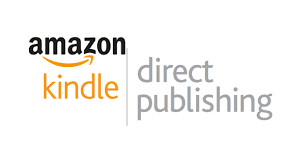
BlueRose Publishers
BlueRose Publishers is a well-known self-publishing platform that helps authors bring their books to life. Founded in 2015, BlueRose offers a variety of services, including editing, cover design, and marketing support. They focus on empowering writers by providing a user-friendly interface that allows authors to maintain creative control over their work. This platform is suitable for both new and experienced authors looking to self-publish fiction, non-fiction, and poetry.
One of the best self-publishing platforms in India is BlueRose Publishers, which assists you with book publication, formatting, marketing, printing, and distribution.
BlueRose Publishers dedication is one of their most notable qualities. A group of experts works for them to make sure every book satisfies industry requirements. They also make the publishing process transparent by giving authors the means to monitor sales and control royalties. Writers may effectively reach their target audience and successfully manage the self-publishing process with BlueRose.

Choosing the Right Self-Publishing Platform
When it comes to choosing the right self-publishing platform, it’s important to consider your goals and the features each platform offers. Popular options like Amazon Kindle Direct Publishing (KDP), BlueRose Publishers cater to different needs. KDP is great for reaching a large audience quickly, while BlueRose Publishers provides access to bookstores and libraries. Smashwords allows for a wide distribution of eBooks. Look for platforms that offer user-friendly interfaces, marketing tools, and good royalty rates.
Examine reviews and price structures before making a decision. While some platforms take a cut of your purchases, others charge up front. Think about your spending limit and the level of assistance you require during the publishing process. Additionally, see if the platform provides customer support and formatting guidance. Your journey to self-publishing will be more successful if you take the time to consider your options.
You may also read: Types of Editing: Which One Does Your Manuscript Need?
Designing Your Book
A professionally designed book cover and interior layout can significantly impact readers’ first impressions.
Cover Design Tips
Making your book’s cover visually appealing is essential to drawing readers in. Start by being aware of your book’s genre and target readership. Make use of images, typefaces, and colors that correspond with the topics of your narrative. Because the title may display on websites and thumbnails, make sure it is readable even at reduced sizes. Adding a subtitle can let prospective readers know what to anticipate. Lastly, if your budget permits, think about working with a professional designer who can use their skills and imagination to make your idea a reality.
When your design is complete, consider how it will appear in different print and eBook formats. A distinctive design can attract attention, so make sure your cover stands out from others in the same genre. Make sure to prominently display your name, particularly if you have previously published. Once your cover design is complete, test it by asking friends or writing groups for their opinions. Their advice might assist you in improving the design so that it appeals to your target demographic and makes a statement.
Interior Formatting Essentials
One of the most important steps in getting your manuscript ready for publishing is interior formatting. It entails adjusting line spacing, font styles, and margins to make your writing readable and aesthetically pleasing. It is typical to use a conventional font, such as 12-point Garamond or Times New Roman. Additionally, take note of headings and subheadings since they aid in directing readers through your material. Proper alignment of photographs or graphics and consistent page numbering also improve the way your book is presented overall.
Take the audience and genre into account while formatting your book. For example, scholarly publications might demand footnotes and citations, yet children’s novels typically call for larger fonts and more illustrations. The process can be streamlined with the use of specialized software like Scrivener or tools like Microsoft Word. Lastly, always proofread your document carefully before submitting it to ensure that all formatting is correct. In addition to looking polished, a well-formatted book enhances the reading experience, increasing the likelihood that both publishers and readers will find your work appealing.
Setting Up Your Book for Success
There are a few final legal and technical steps before your book is ready for readers.
Choosing the Right ISBN
For any author hoping to publish a book, selecting the appropriate ISBN (International Standard Book Number) is a crucial first step. Retailers, libraries, and distributors can more easily locate and catalog your book thanks to an ISBN, which serves as a unique identification for your work. For your book to be properly listed in catalogs and online platforms, each format paperback, hardback, or e-book needs its unique ISBN. This makes it easier for readers to find your work, increases your trust, and streamlines distribution.
There are alternatives available to you when choosing an ISBN. An ISBN can be purchased directly from reputable organizations, like Bowker in the US, or occasionally through a self-publishing site. Buying your own ISBN is frequently the best option if you want complete control over the publication of your book because getting one from a publishing platform may list them as the publisher.
Copyrighting Your Work
To safeguard your rights as an author and stop unauthorized use of your book, you must copyright your work. You acquire the sole right to duplicate, distribute, and exhibit your work when you copyright your book. Although copyright protection in most nations starts as soon as your work is created, registering it properly offers further legal advantages, such as ownership proof.
Marketing and Promotion Strategies
Marketing is essential for book success, especially in self-publishing.
Building Your Author Platform
Developing your author platform is crucial to successful book promotion and marketing. Your online and offline presence and impact as an author are known as your author platform. Start by setting up a blog or website to share updates, display your work, and provide an inside look at your writing process. Make use of social media platforms such as Facebook, Instagram, and Twitter to interact with readers, distribute material, and advertise your book. You can draw in viewers and get followers who are sincerely interested in your work by maintaining a polished and interesting online presence.
To maintain direct communication with your readers, think about creating an email list in addition to social media. You can increase your subscriber base by providing a free short story or sample chapter to people who join up. To reach a wider audience, work with other writers, join book clubs, or take part in internet discussion boards. These initiatives build your author platform over time, giving you a devoted following that will be there to help your book succeed when it comes out.
Social Media Marketing for Authors
An effective strategy for connecting with readers and promoting books is social media marketing. Authors may interact with their audience on a daily basis and share behind-the-scenes information and book updates by using social media sites like Facebook, Instagram, and Twitter. Excitement is generated and a devoted following is developed by posting teasers, cover reveals, and even surveys for reader input. Since consistency is essential, creating a content plan can assist writers in maintaining their visibility and connections.
To reach a wider audience, authors can also take part in online book communities and engage discussions around hashtags connected to books. Exposure can also be increased by working with other authors and leaders in these areas. Social media advertisements are a cost-effective way to reach particular reader demographics, making them a successful book promotion tactic at any size.
Creating a Book Launch Plan
A successful book release depends on developing a launch strategy, which guarantees that you will connect with potential readers and generate momentum both before and after your publication date. Determine your target audience first, then write a concise statement that emphasizes the special qualities of your work. In addition to helping to build reader anticipation, this phase enables you to customize promotional materials including teasers, cover reveals, and sample chapters to specifically target your target audience.
After establishing the fundamentals, create a schedule for your promotional efforts. To create anticipation in the weeks before your debut, schedule blog features, email newsletters, and social media updates. To increase interest, work with book bloggers, set up online readings or Q&A sessions, and think about holding giveaways. Your book launch will be a remarkable success if you have a well-thought-out plan with several promotional outlets to reach a larger audience.
Conclusion
Careful preparation, perseverance, and an openness to new ideas are necessary for book publishing. In the end, your readers are the ones who will make your work come to life, so stay engaged and passionate about what you do.

